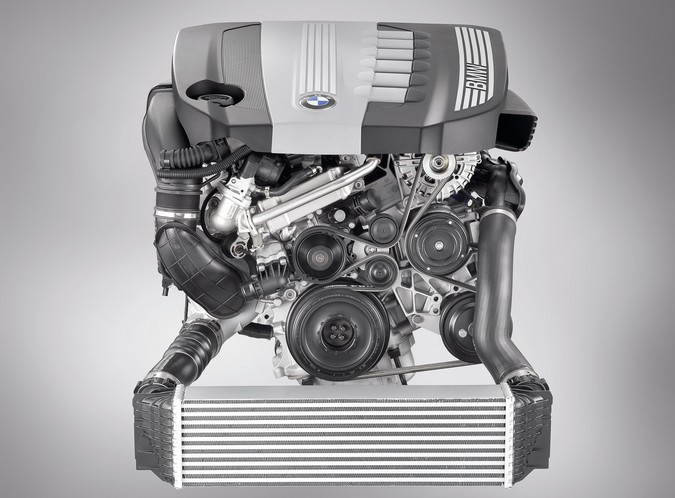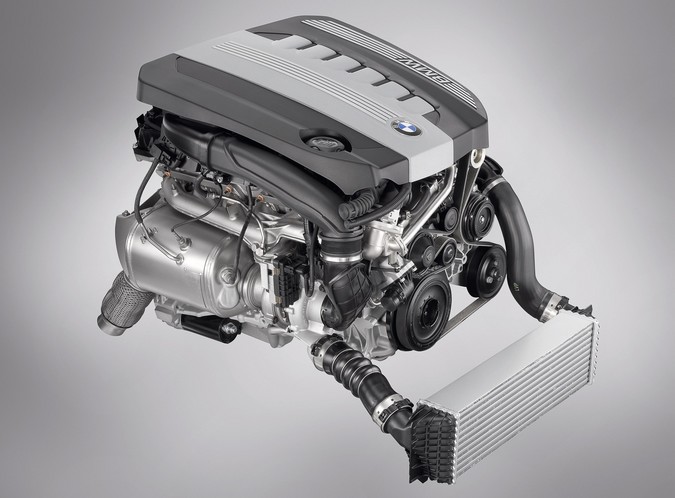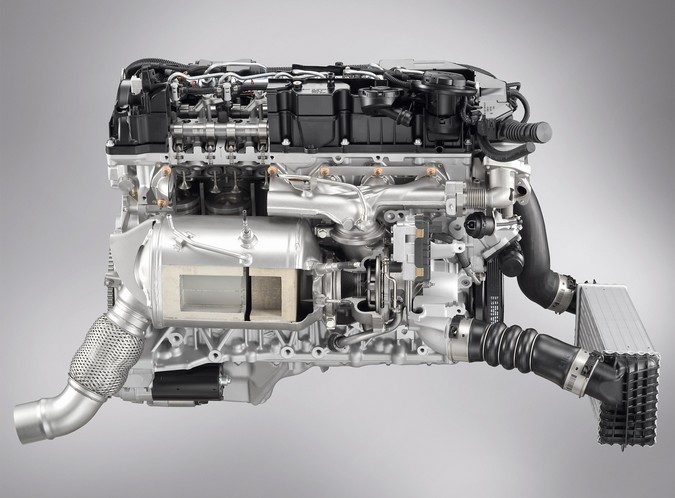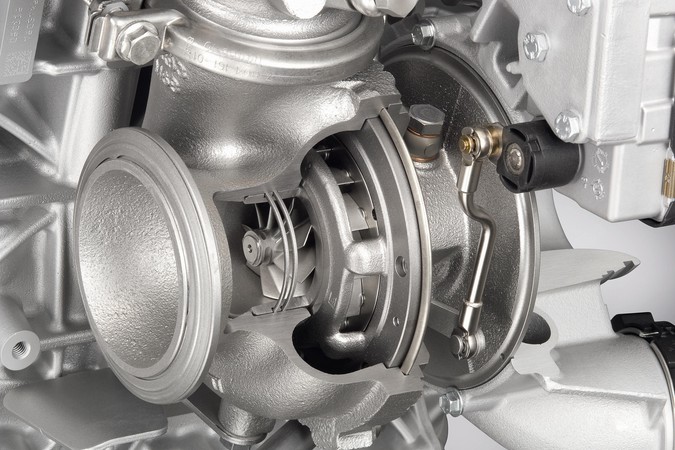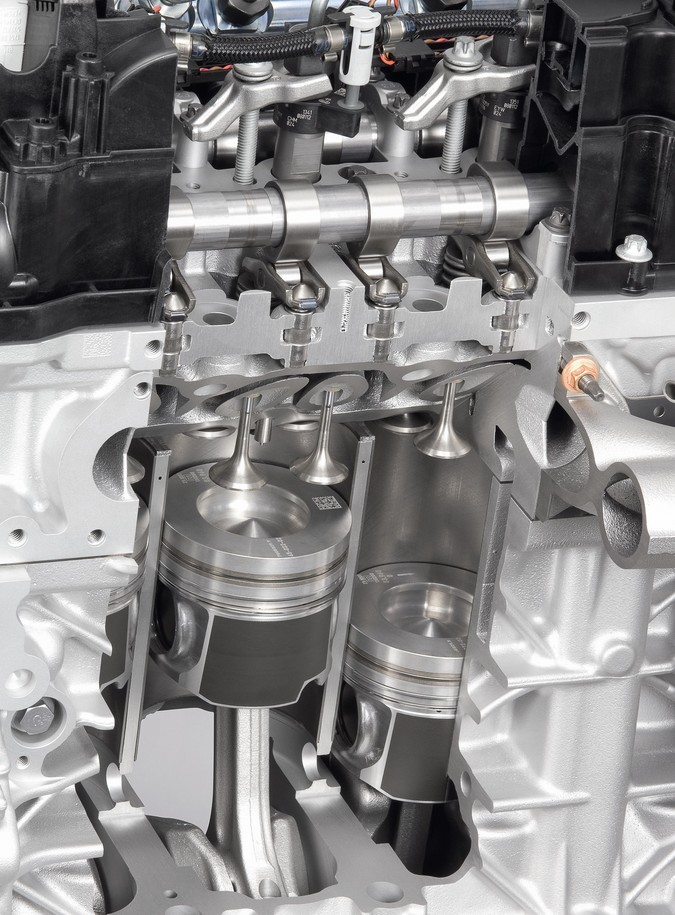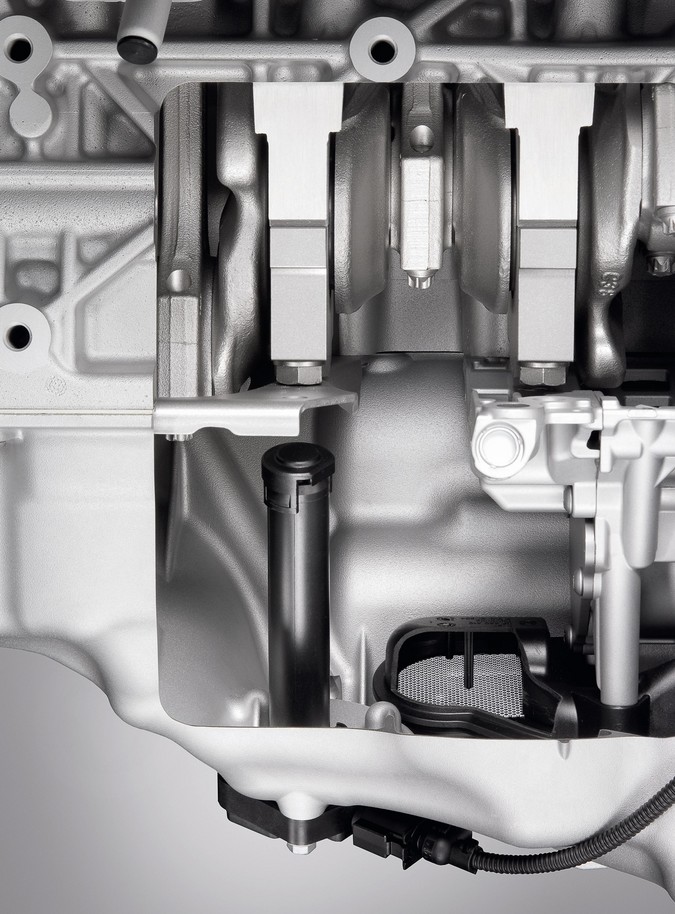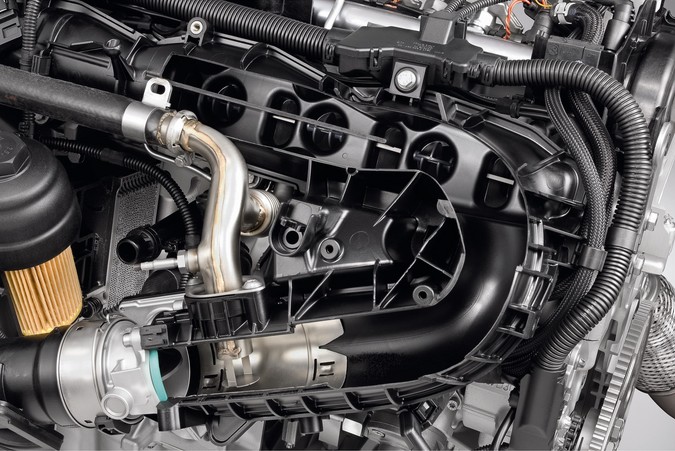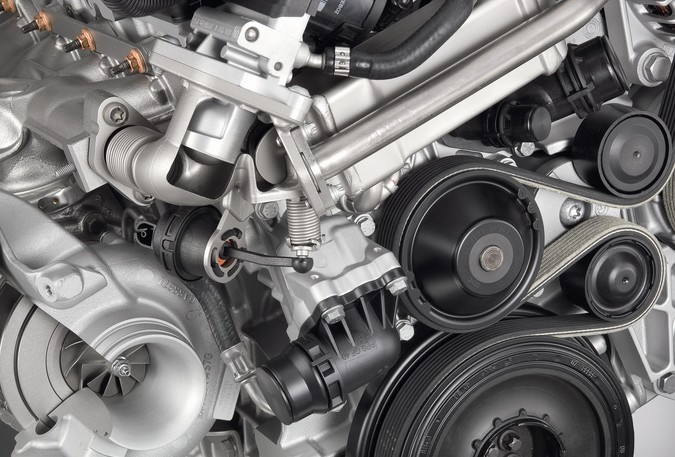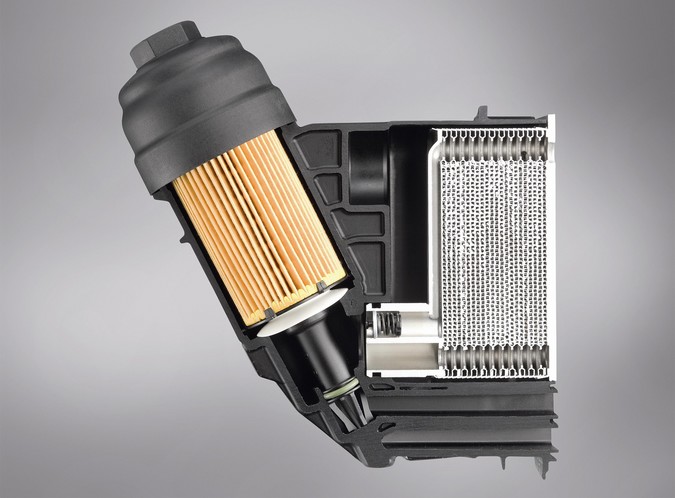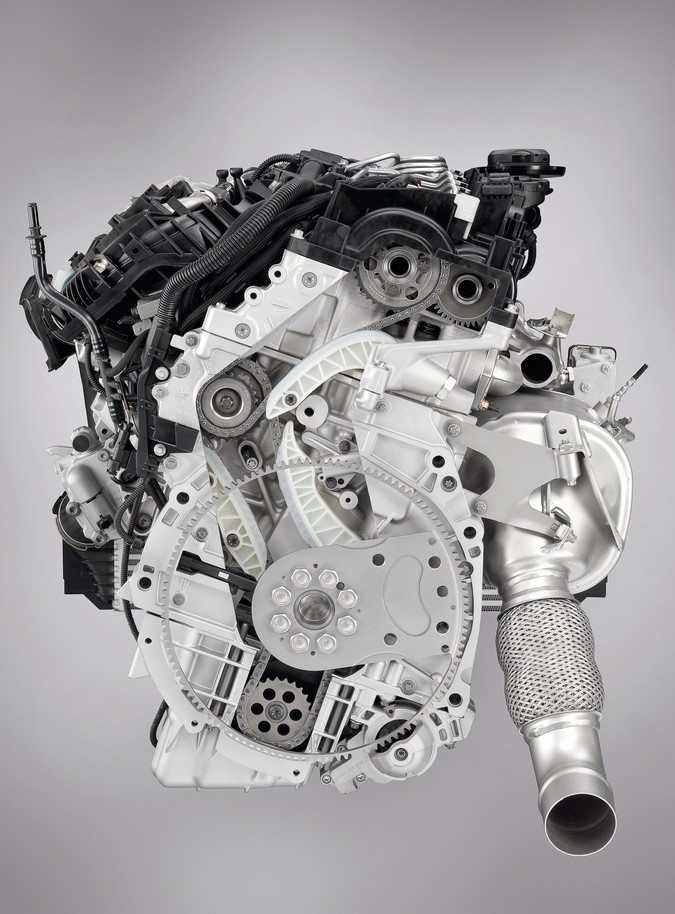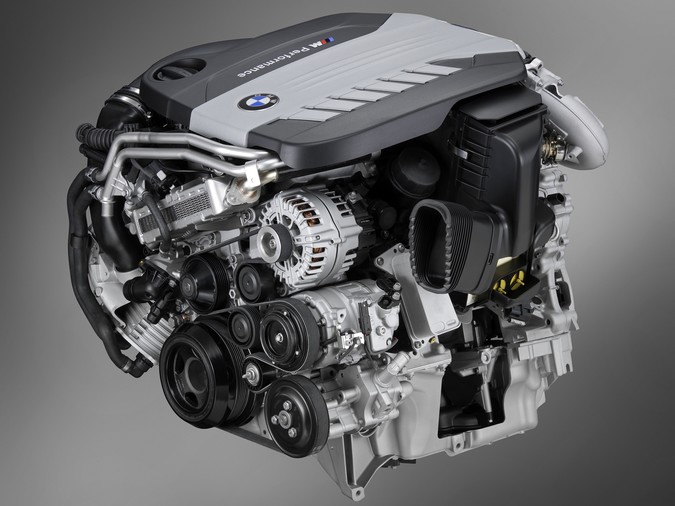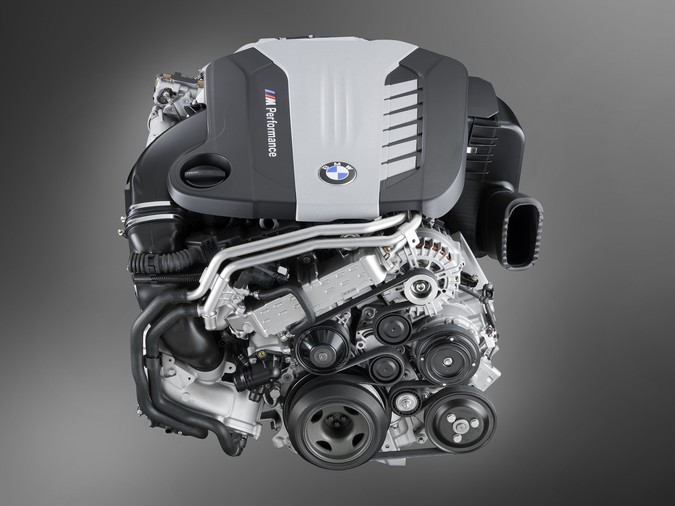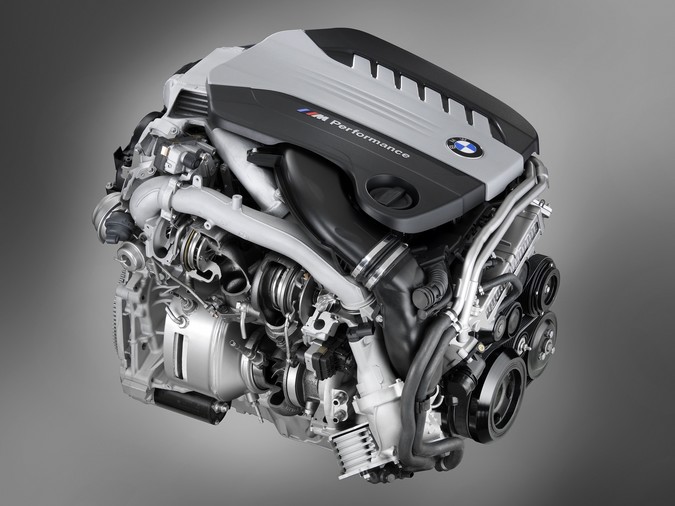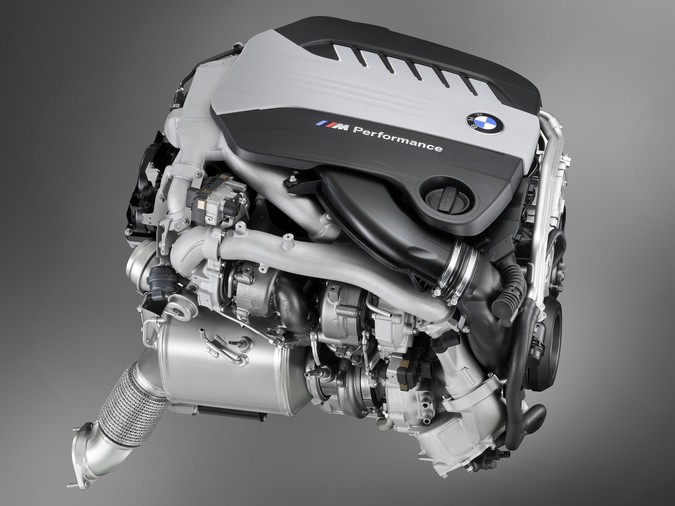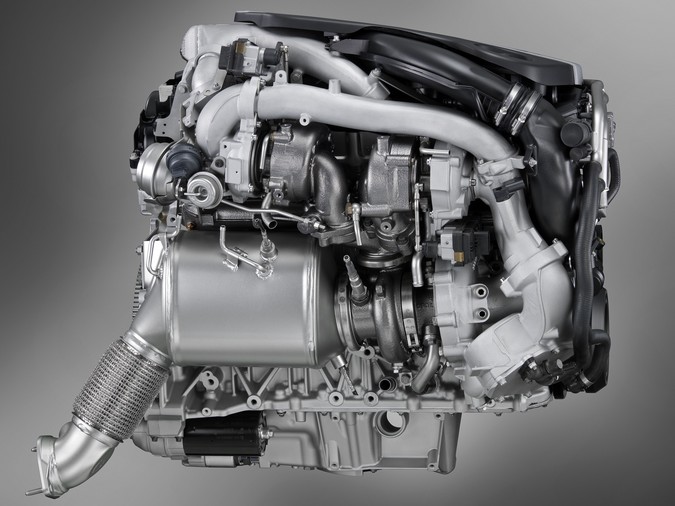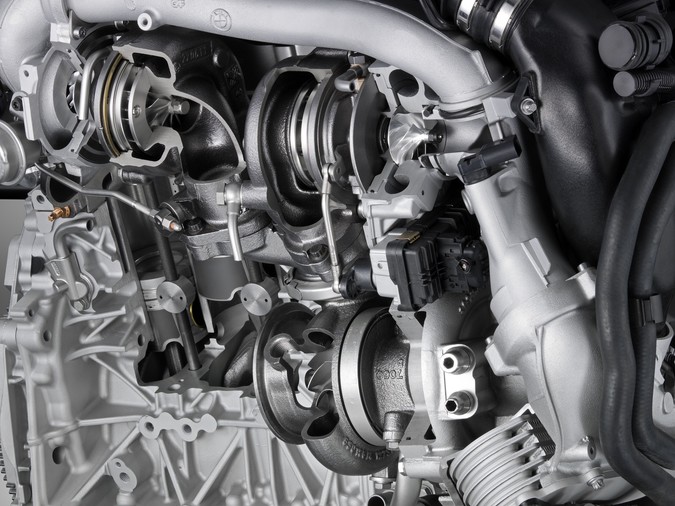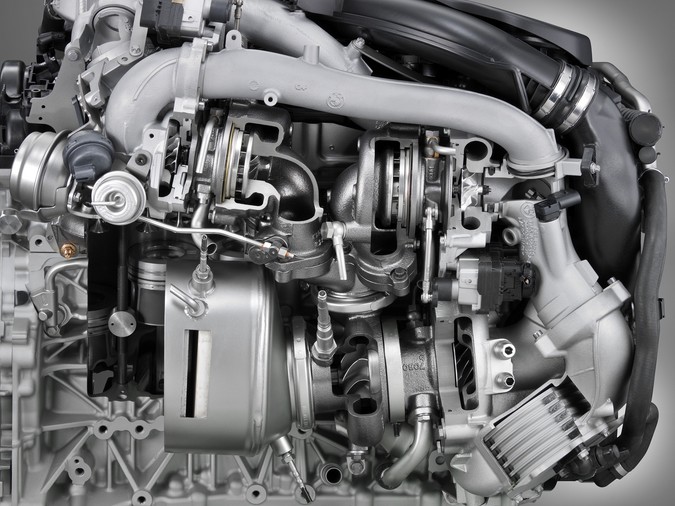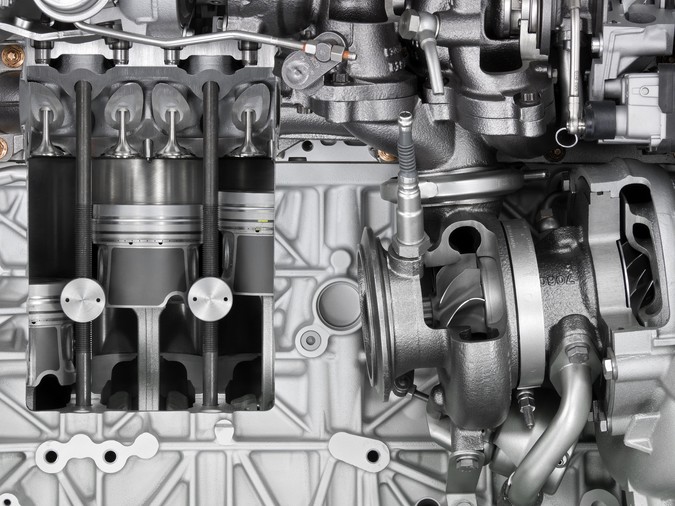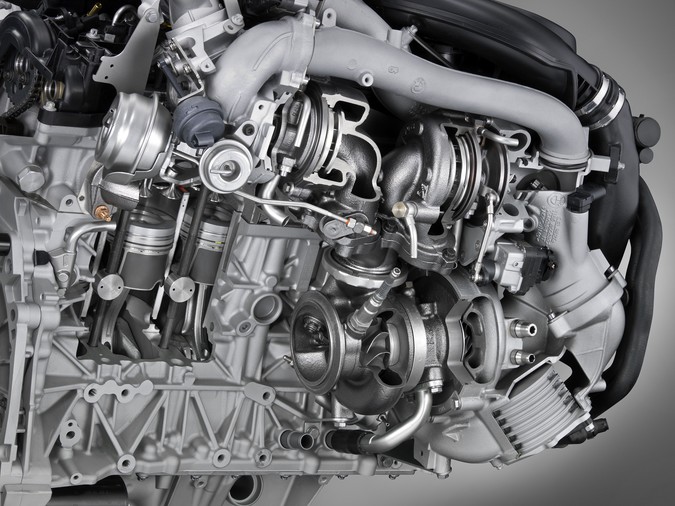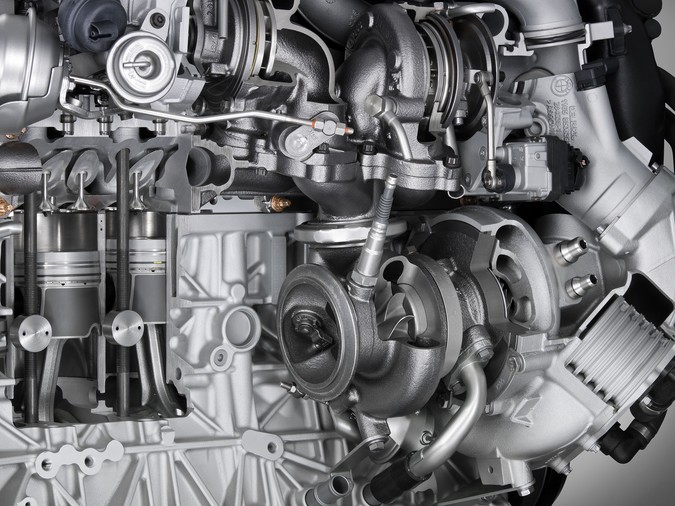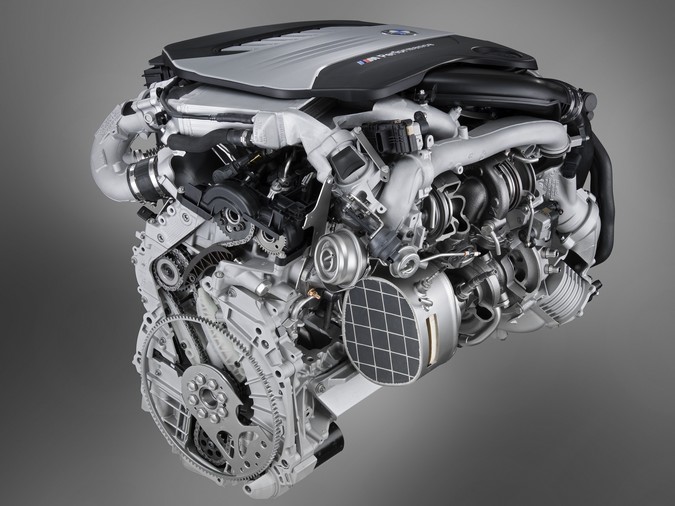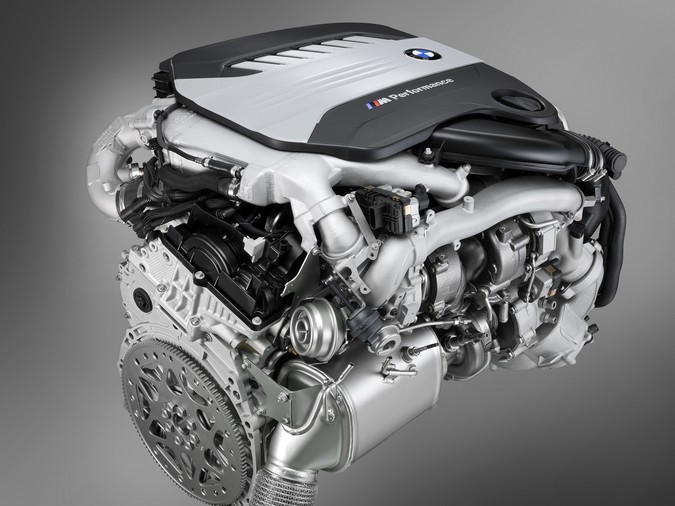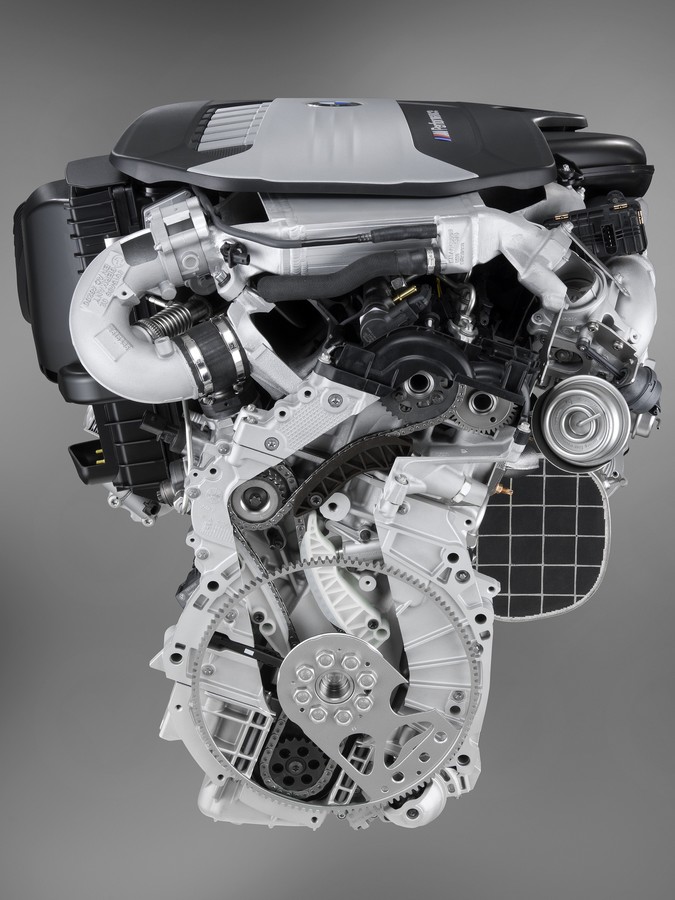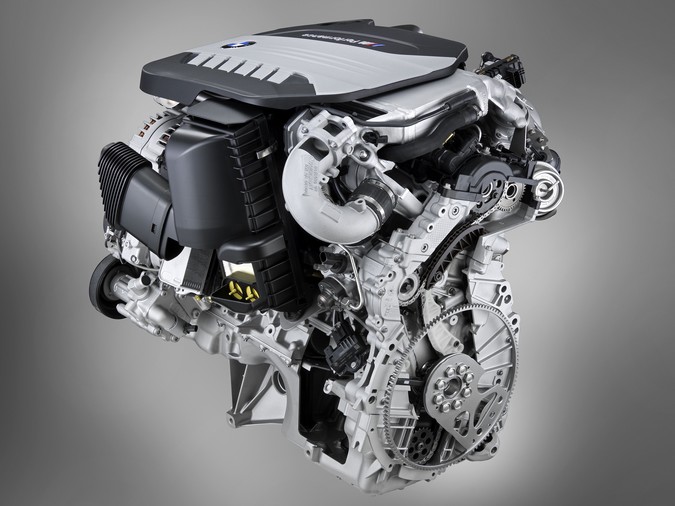The N57TU (Technical Update) was introduced in late 2010.
BMW N57
The N57 engine featured a closed-deck, aluminium crankcase with sintered metal main bearing caps and dry, thermally joined cast-iron cylinder liners. To cope with lateral stresses, a reinforcing plate was bolted to the bottom of the crankcase. Furthermore, the forged crankshaft was produced from C38modBY (‘BY’ denotes controlled cooling from the forging heat in the air for uniform joints).
The N57 engine had a two-piece cylinder head – made from AlSi7MgCu0.5 – which consisted of the main casting and a carrier plate for the camshafts. Other features of the N57 cylinder head included cross-flow cooling and an integral exhaust gas recirculation channel.
The chain driven system for the double overhead camshafts was mounted on the flywheel side of the engine – it included hydraulic chain tensioners and plastic tensioning and guide rails. While the intake camshaft was driven by a sprocket that was chain-driven by the crankshaft, the exhaust camshaft had direct gear-to-gear drive from the intake camshaft. Like other BMW diesel engines, the composite camshafts were manufactured using the Presta method.
The N57 engine had a fourth-generation common-rail injection system which used Bosch piezo-electric injectors (though the N57TU, described below, used solenoid injectors). Varied engine outputs were achieved for the N57 engine through different turbocharging strategies and fuel pressures –
- The N57D30OL engine (180kW) had a single variable geometry turbocharger and fuel injection pressure of 1800 bar;
- The N57D30TOP engine (220-230kW) had a single variable geometry turbocharger and larger turbocharger, while fuel injection occurred at 2000 bar; and,
- The N57D30S1 engine (280kW) had three differently sized turbochargers and fuel injection pressure of 200 bar.
BMW N57TU
Available from late 2010, changes for the N57TU engine included:
- New Bosch CRI 2.5 solenoid injectors were introduced. The CRI 2.5 injectors could operate at up to 1800 bar and deliver six injections per combustion cycle. Combined with changes to nozzle geometry, the CRI 2.5 injectors reduced hydrocarbon (HC) and carbon monoxide (CO) emissions;
- New BEUR ceramic glow plugs (CGPs), the tips of which produced temperatures of 1300 degrees Celsius (compared to 1000 degrees for its predecessor). The new BEUR CGPs also had lower power consumption and faster response times;
- The introduction of a twin-piston, high pressure fuel pump (CP4.2). The CP4.2 pump was located on the flywheel (rear) side of the engine and driven via the timing chain. Through the introduction of roller tappets, the power required to drive the CP4.2 pump was 20 per cent less than its CP3 predecessor;
- The throttle valve for the air intake was moved to the front of the engine and the intake tract was shortened as air from the intercooler was introduced into the DISA;
- The introduction of low-pressure exhaust gas recirculation (EGR) that connected directly to the differentiated air intake system (DISA). For the N57TU, exhaust gases could be introduced into the DISA either cooled or uncooled, depending on operating temperature;
- The swirl flaps were integrated in the gasket between the DISA and the cylinder head (previously integrated in the DISA). With this arrangement, the swirl flaps – if they failed – could be replaced without having to replace the entire DISA;
- New Denso exhaust back-pressure sensors were fitted upstream of the turbocharger;
- Particulate matter sensors were integrated into the exhaust system downstream of the diesel particulate filter (DPF); and,
- A NOx storage catalyst was fitted in place of the previously used oxidation catalyst.
| Engine | Peak power | Peak torque | Max. speed | Models | Years |
|---|---|---|---|---|---|
| N57D30U0 | 150kW at 3750rpm | 450Nm at 1750-2500rpm | 5000rpm | E90 325d | 2010-13 |
| F10 525d, F11 525d |
2010-on | ||||
| N57D30O0 | 180kW at 4000rpm | 520Nm at 1750-3000rpm | 5000rpm | E90 330d | 2008-13 |
| F01 730d | 2008-12 | ||||
| F07 530d | 2009-12 | ||||
| 540Nm at 1750-3000rpm | 5000rpm | F10 530d, F11 530d |
2010-on | ||
| E70 X5 xDrive30d | 2010-13 | ||||
| E71 X6 xDrive30d | 2010-13 | ||||
| N57D30O1 (TU) |
190kW at 4000rpm | 560Nm at 5000rpm | 5000rpm | F25 X3 xDrive30d | 2011-on |
| 540Nm at 1500-3000rpm*; 560Nm at 1500-3000rpm |
5000rpm | F10 530d | 2011-on | ||
| F30 330d | 2012-on | ||||
| F07 530d | 2012-on | ||||
| F01 730d | 2012-15 | ||||
| F15 X5 xDrive30d | 2013-on | ||||
| 210kW at 4000rpm | 600Nm at 1500-3000rpm | 5000rpm | F30 330d**, F10 530d** |
2010-on | |
| N57D30T0 | 220kW at 4400rpm | 600Nm at 1500-2500rpm | 5600rpm | F07 535d | 2010-on |
| F10 535d, F11 535d |
2010-on | ||||
| 225kW at 4400rpm | 600Nm at 1500-2500rpm | 5600rpm | F01 740d | 2009-15 | |
| E70 X5 xDrive40d | 2010-13 | ||||
| E71 X6 xDrive40d | 2013-13 | ||||
| N57D30T1 (TU) |
230kW at 4400rpm | 630Nm at 1500-2500rpm | 5600rpm | F07 535d | 2012-on |
| F25 X3 xDrive35d | 2011-on | ||||
| F10 535d, F11 535d |
2011-on | ||||
| F12 530d | 2011-on | ||||
| F01 740d | 2012-15 | ||||
| F15 X5 xDrive40d | 2013-on | ||||
| N57D30S1 | 280kW at 4400rpm | 740Nm at 2000-3000rpm | 5600rpm | E70 X5 M50d | 2012-13 |
| E71 X6 M50d | 2012-13 | ||||
| F15 X5 M50d | 2013-on |
**With BMW M Performance Power Kit

